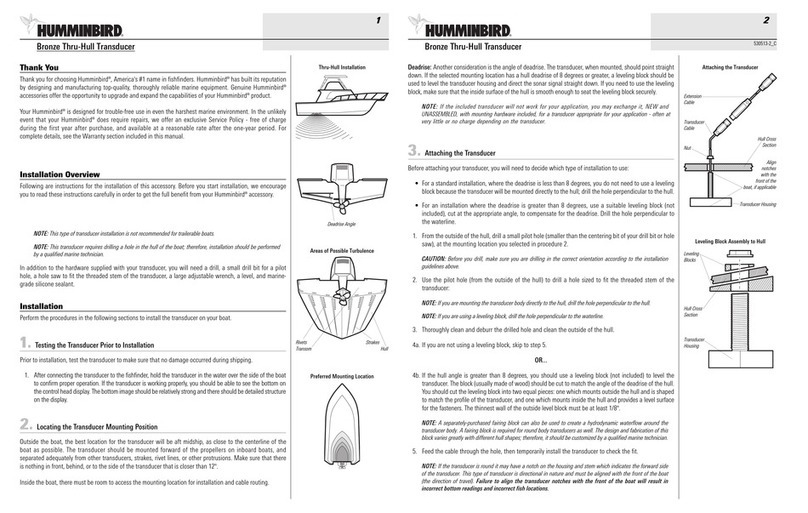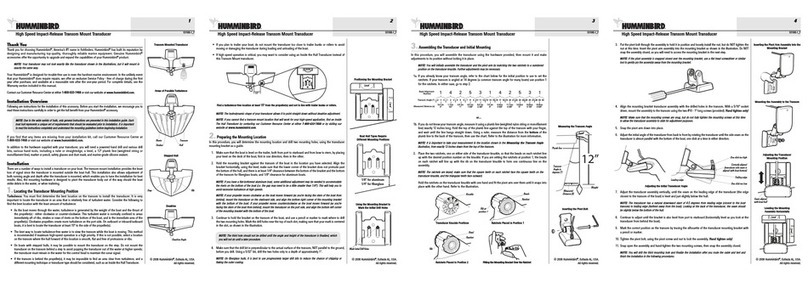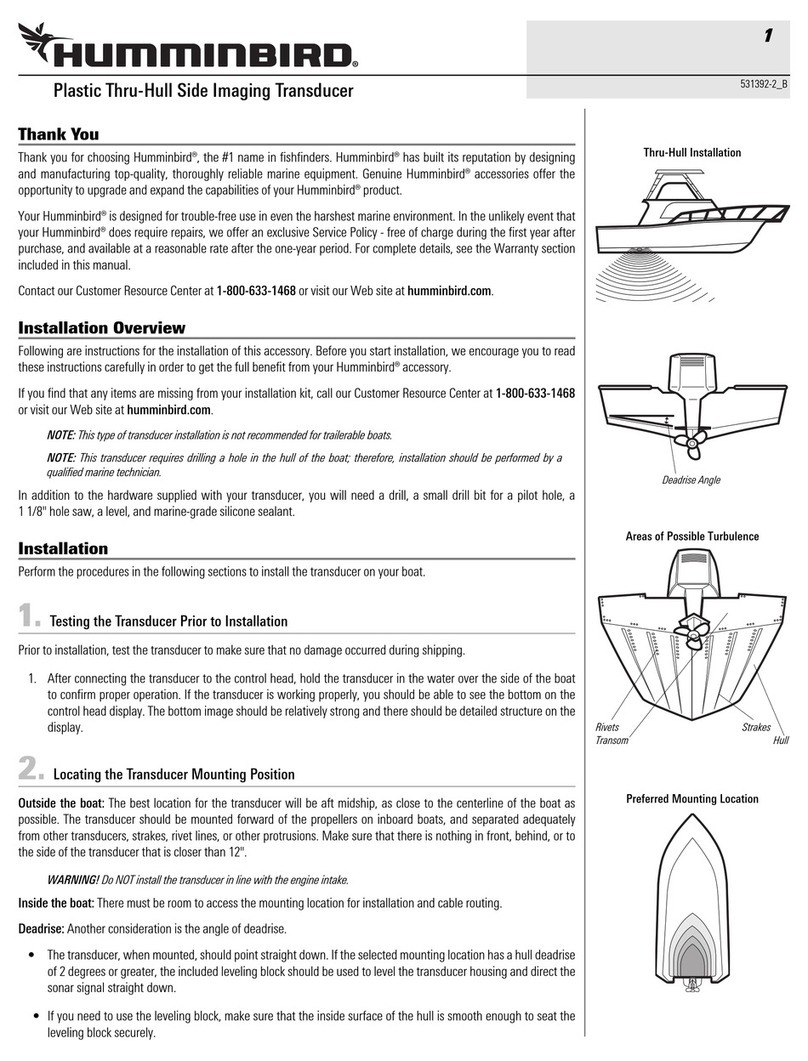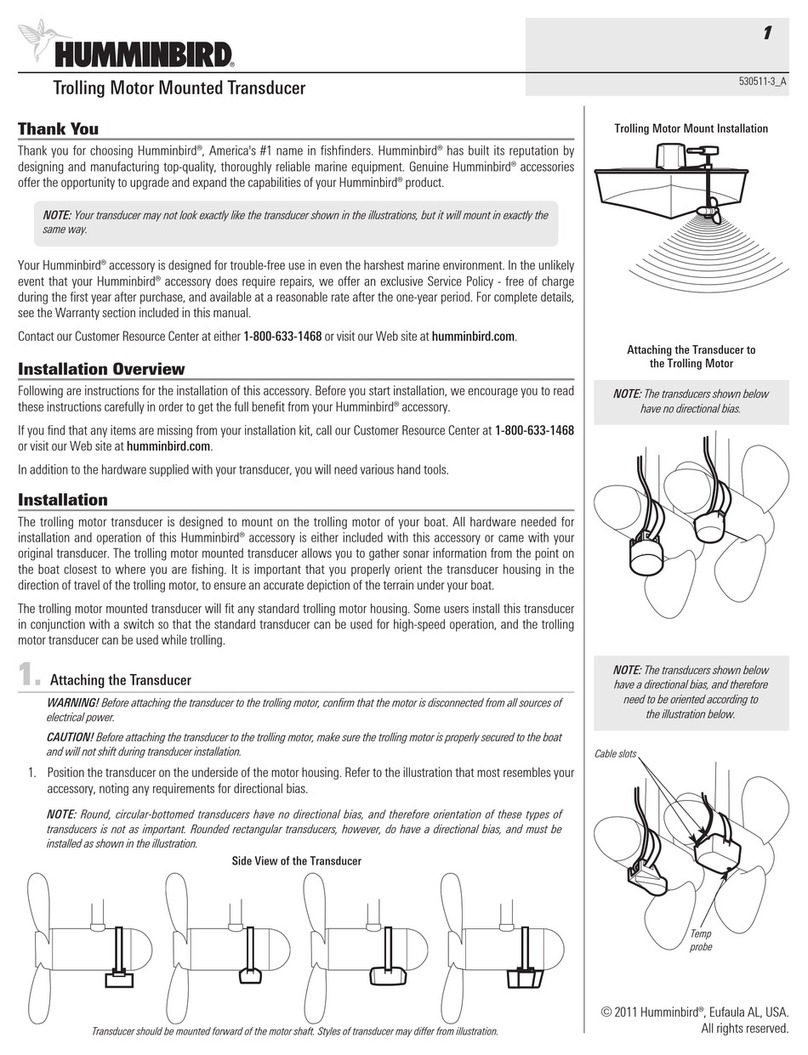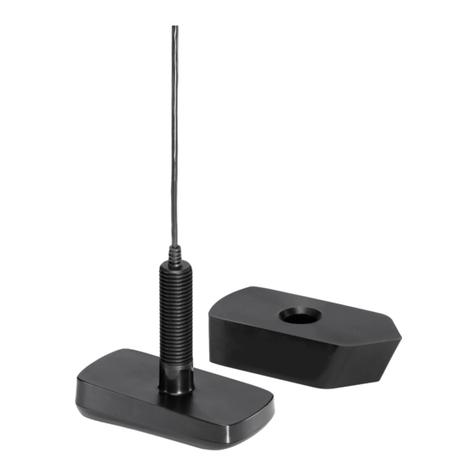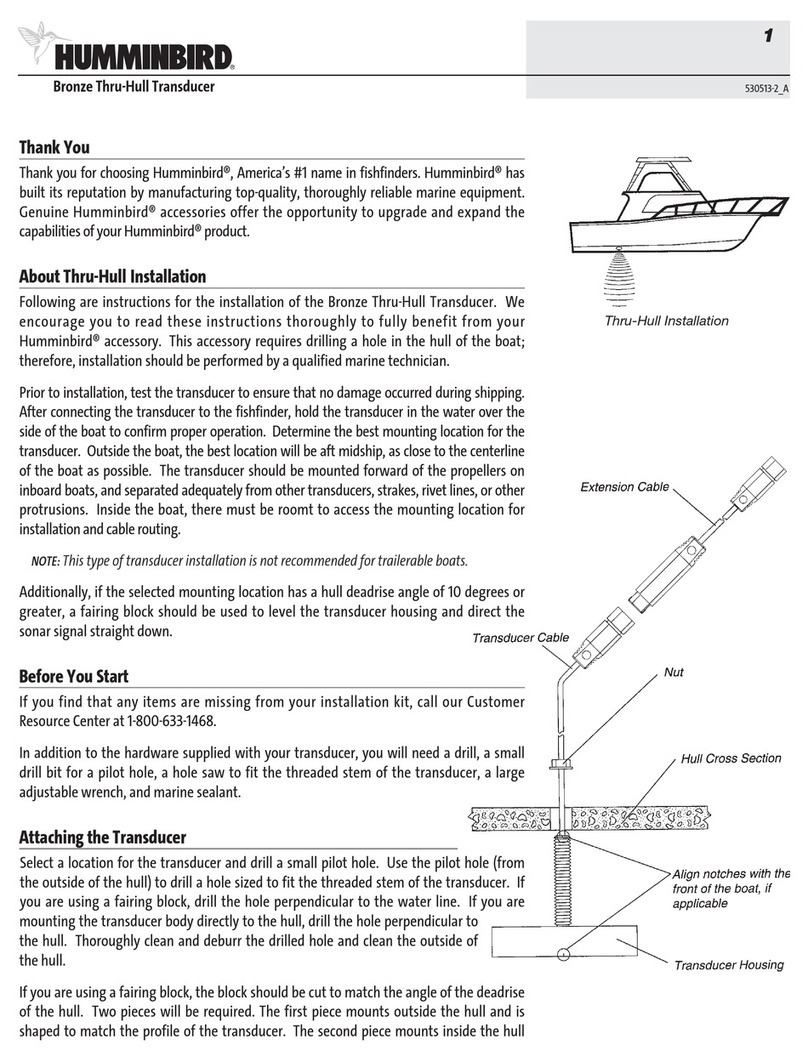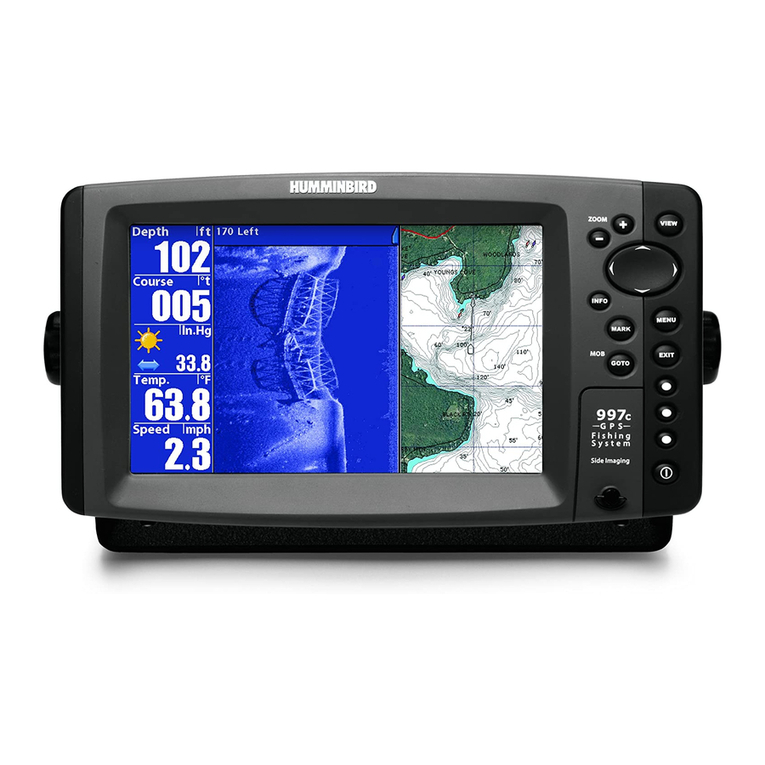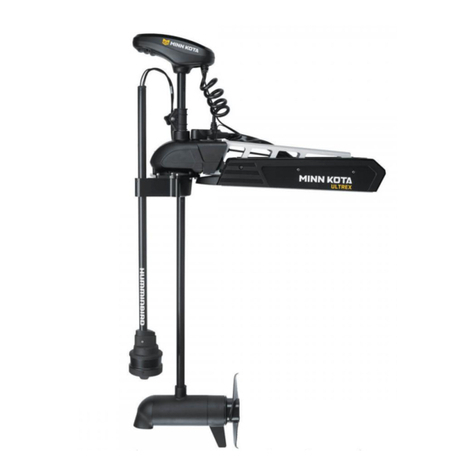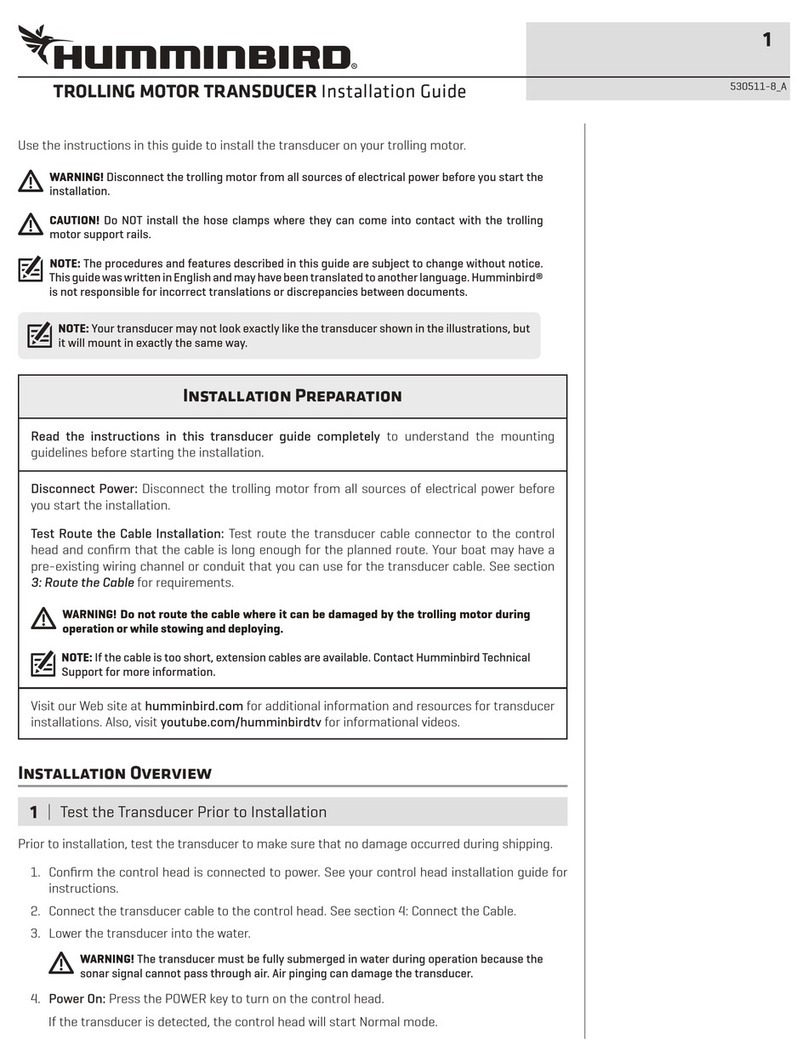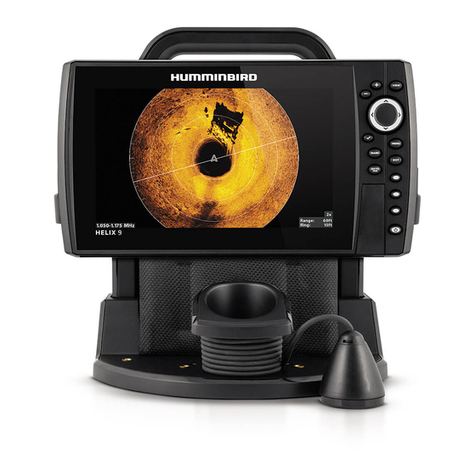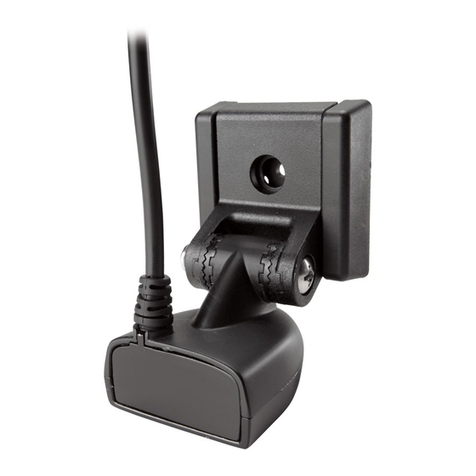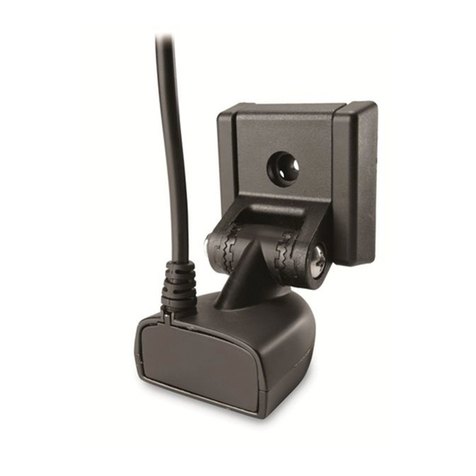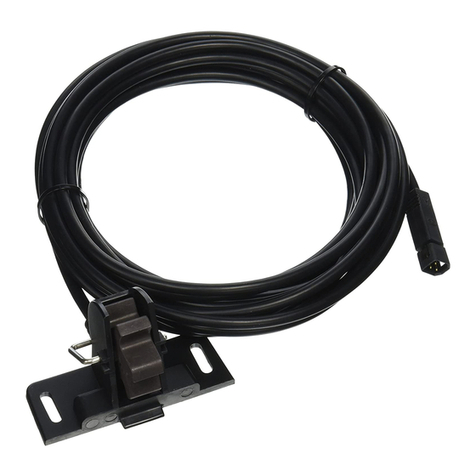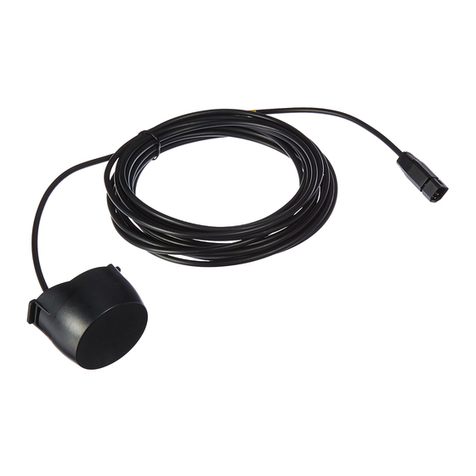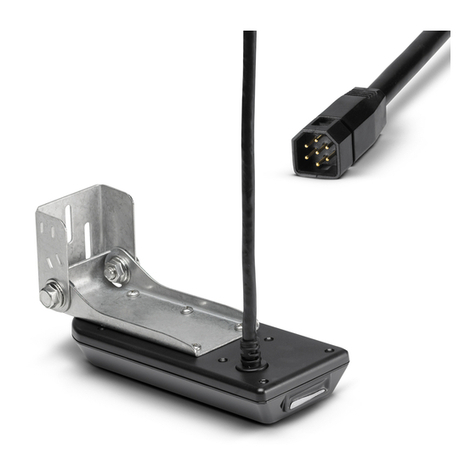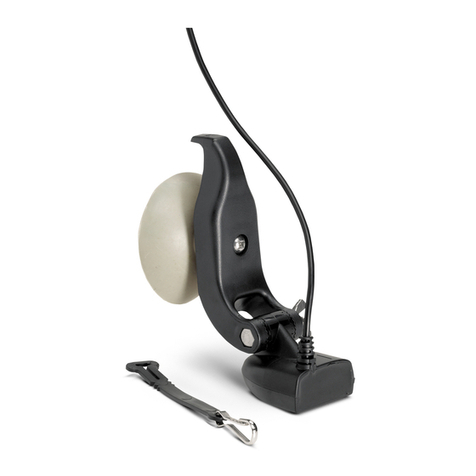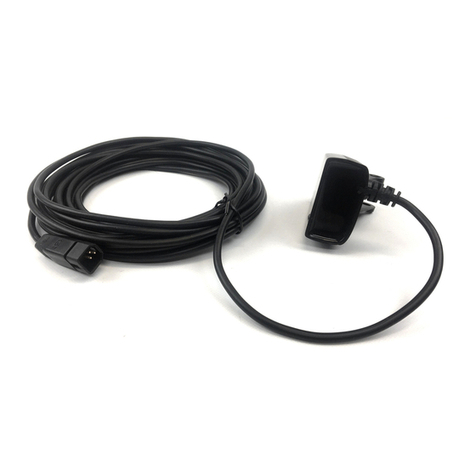
side of the transducer so the cable will not be damaged by the
rotating transducer.
Cable clamps are provided to secure the cable to the transom,
and use the same type of screws as the escutcheon plate.
Inside the boat, there is often a channel or conduit which is
used for other wiring, which can be used to route the transducer
cable forward. Avoid routing the cable in areas where it may
be damaged or interfere with normal boating operations.
The transducer cable should not be cut or shortened, and
care should be used not to damage the cable insulation. If
excess cable needs to be gathered at one location, dress the
routing of cable from both directions so that a single loop is left
extending from the storage location. Doubling the cable up from
this point, form the cable into a coil. Storing excess cable with
this method can reduce electronic interference.
Also, be sure to route the cable as far as practical from the
antenna cable of VHF radios to reduce the possibility of
interference.
This accessory works with a number of Humminbird
depthsounder products. Some products may require
disassembly of the depthsounder mounting bracket in order to
connect the cable. Refer to the operations manual for your
depthsounder.
If you find that the cable is too short for your application,
extension cables are available at a reasonable cost which can
extend the transducer cable up to 50'. Call Humminbird
Customer Support for more information.
Confirm the pivot angle has not changed.
MAINTENANCE
If your boat remains in the water for long periods of time,
algae and other marine growth can reduce the effectiveness of
the transducer. Periodically clean the face of the transducer
with liquid detergent.
If your boat remains out of the water for a long period of
time, it may take some time to wet the transducer when
returned to the water. Small air bubbles can cling to the
surface of the transducer and interfere with proper operation.
These bubbles will dissipate with time, or you may wipe the
face of the transducer with your fingers after the transducer is
in the water.
High Speed Transducer
4
pn530505-2 r11107E
Place on bottom of hull
Align with transom.
DONOTLETDEADRISE
INTERSECTTHISLINE
PLACEEITHERCORNER
ONDEADRISEANGLE
TOP
Use5/32"drillbit
Drill Drill
PLACEEITHER CORNER
ONDEADRISE ANGLE
TOP
Use 5/32" drill bit
DrillDrill
Level
15", 40cm
from prop(s).
PLACE EITHER ARROW
ON DEADRISE ANGLE
TOP
Remove and use for
Transducer Installation
Use ⁵⁄₃₂" drill bit & drill
two holes for hull type
Drill ●
Drill ●
Drill ■
Drill ■
For use with bracket PN 404329-1
Cut and use for Fiberglass Hulls
Fiberglass
Fiberglass Fiberglass
Aluminum
AluminumAluminum
Transducer
Guide
¹⁄₂"
Transducer bottom
Hull
Cut and use for Aluminum Hulls
CUSTOMER RESOURCE CENTER
If you have any questions, call our Humminbird Customer
Resource Center Hotline:
1-334-687-0503
Throughout the U.S. and Canada, hours are Monday-
Friday, 8:15 a.m. to 5:00 p.m. Central time.
Or visit our web site: www.humminbird.com for
Product Support and troubleshooting guides.
If after reading “Troubleshooting” you determine your
unit needs factory service, please attach a description of
the problem and send it with the unit to the address
below.
If you are including a check, please attach it to the unit.
Humminbird
Service Department
108 Maple Lane
Eufaula, AL 36027
Further information on Humminbird products can be
found at:
www.humminbird.com
Storing excess Cable
